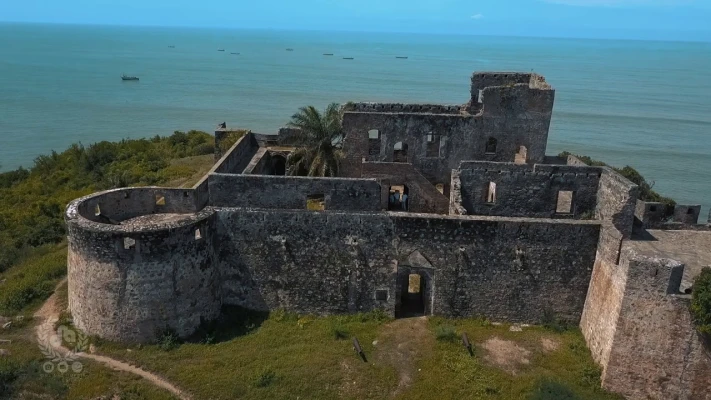Elmina Castle: A Haunting Legacy...
November 23, 2023

Fort Amsterdam, a former slave fort located in Abandze in Ghana's Central Region, stands as a significant historical monument. Constructed by the English between 1638 and 1645, it was originally known as Fort Cormantin or Fort Courmantyne.
In 1665, the fort was captured by Admiral Michiel de Ruyter of the Dutch West India Company as a retaliation for the English seizure of several Dutch forts by Admiral Holmes in 1664.
Subsequently, it became part of the Dutch Gold Coast and remained under Dutch control until it was traded to the British in 1868.
Situated northeast of Cape Coast in the Mfantseman District, Fort Amsterdam's importance in the Atlantic slave trade and its reflection of European colonial influence in West Africa led to its inscription on the UNESCO World Heritage List in 1979, along with other forts and castles in Ghana.
In early 1782, during the Fourth Anglo-Dutch War, Captain Thomas Shirley led the British 50-gun ship Leander and the sloop-of-war Alligator to the Dutch Gold Coast.
Shirley's forces captured several Dutch forts, including those at Moree (Fort Nassau), Kormantin (Courmantyne), Apam (Fort Lijdzaamheid or Fort Patience), Senya Beraku (Fort Goede Hoop), and Accra (Fort Crêvecoeur or Ussher Fort).
In 1811, allies of the British from Anomabo attacked Fort Amsterdam, leaving it in ruins. The fort remained unoccupied until 1951, when it was restored by the Ghana Museums and Monuments Board.
Today, the town of Abandze has grown around the historic site of Fort Amsterdam. The original structure of the fort featured a rectangular outline with two square and two round bastions at the corners, linked by curtain walls, and a central courtyard.
The west side housed a one-storeyed building, the north side a two-storeyed building, and the south side had two or three storeyed buildings. While the north bastion and curtain were robustly built, other sections were constructed with earth filling between two stone walls, leading to their eventual disintegration and abandonment.
The southeast bastion, designed to be hollow with grated ventilation, served as a slave prison, possibly the first of its kind on the Gold Coast. Slaves from this fort were known as Coromantee.
Between 1705 and 1716, trade at Fort Amsterdam included 481 marks of gold and 149 slaves, though there were periods of limited trade due to wars and conflicts with local chiefs.
The local chief reportedly leased the site to the British, limiting Dutch jurisdiction and trade, with the Cormantin people obstructing trade routes until the Dutch paid substantial sums. Despite these challenges, the fort remains a footprint of the complex history of trade, colonialism, and the transatlantic slave trade in West Africa.
November 23, 2023
November 23, 2023
June 19, 2024
November 25, 2023
November 17, 2023
November 27, 2023
June 12, 2024